But do you know how these little fermented fruits are made?
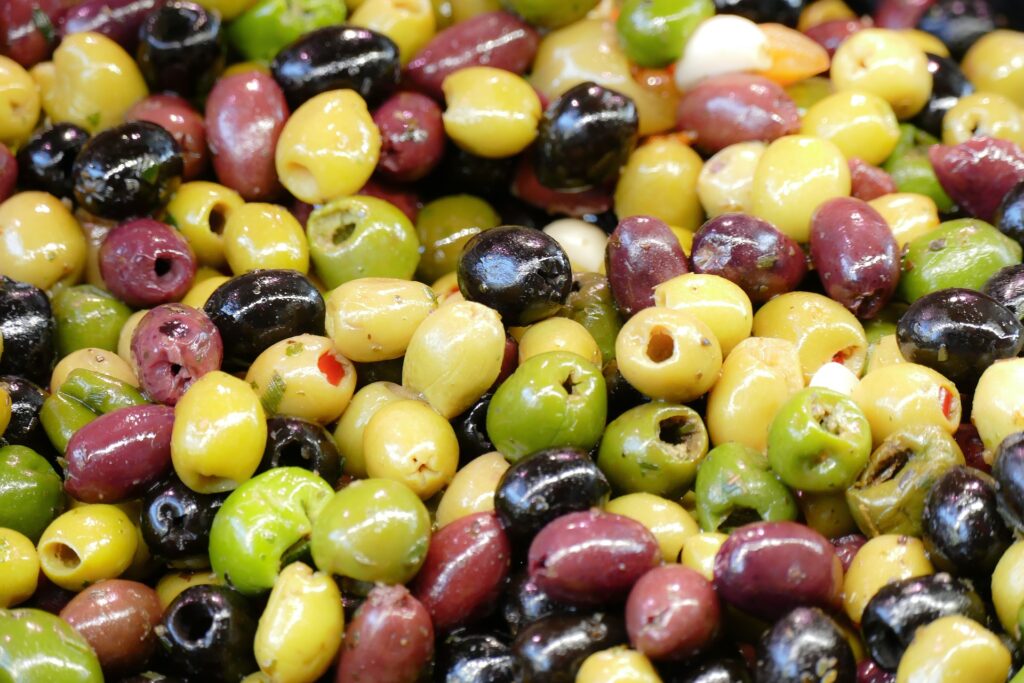

If you think the olives you buy in the grocery store are unpalatable, count yourself lucky that you’ve never tasted the fresh fruit.
Picked right off the tree, olives are considered inedible due to the high amount of a bitter compound called oleuropein. And most of the processing of olives is done specifically to remove this molecule.
As far back as the Roman times, humans learned to process olives to reduce the amount of oleuropein. The Romans soaked the fresh fruit in water supplemented with wood ash. The addition of ash yielded alkaline conditions that rapidly degraded oleuropein making the olives edible within a few days.
While olive processing has come a long way from combining the fruit with burnt wood, we’re still processing these little guys to lower the bitterness and up the deliciousness. And with slightly different methods, three main types exist — Spanish-style, Greek-style, and California-style — each with their own interesting science behind their creation.
Spanish-style olives
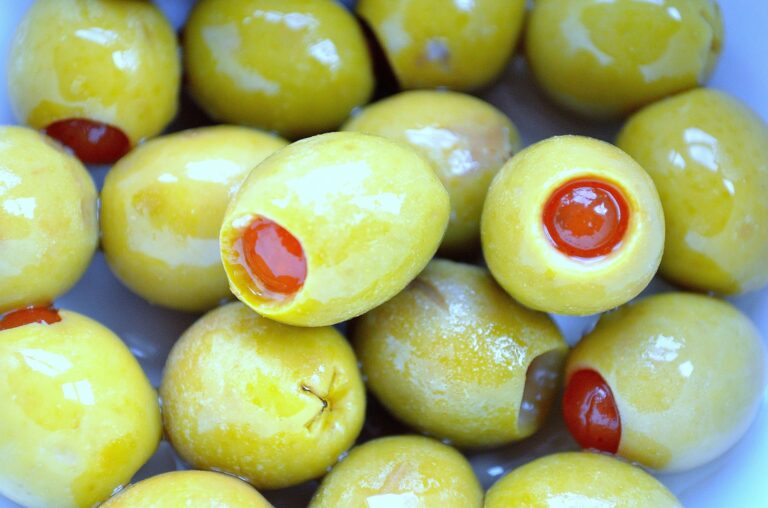

Here we’re talking about those green olives that you see packed in jars and stuffed with all sorts of fancy ingredients from bleu cheese to jalapenos.
To begin, Spanish-style olives are harvested from the tree before they’re fully ripened and still have a green or pale yellow skin.


Next is a lye treatment. Lye is another name for a solution of sodium hydroxide (NaOH), which is a strong base (or high pH).
Soaking the olives in such a basic environment breaks down oleuropein — that bitter compound we need to get rid to make the olives more palatable.
After several lye treatments, the amount of oleuropein is drastically reduced and the olives are washed with water to remove the lye. A small amount of lye may remain in the olives giving them a slight bitterness.


Then the olives are moved into barrels containing a brine — or salt solution — and soaked until they reach a salt concentration of 6–9%. Sometimes glucose is added to the solution to restore any sugars that were lost in the earlier lye treatment.
Next is a step known as wild fermentation (or spontaneous fermentation). This means the microorganisms naturally found on the olives begin to ferment the sugars in the fruit.
In contrast, beer is made by a method called controlled fermentation where specific microorganisms are added to the beverage and the fermentation isn’t left up to chance.
During the early stages of olive fermentation many different microorganisms are active including coliforms, Pseudomonas, Bacillus, and Clostridium.
Soon enough, a certain type of microorganism known as lactic acid bacteria begin to take over the fermentation. This is the same group of bacteria responsible for fermented foods like sauerkraut and pickles.
These bacteria are great at converting sugars into lactic acid and it’s this accumulation of acid that helps preserve the olives long term.
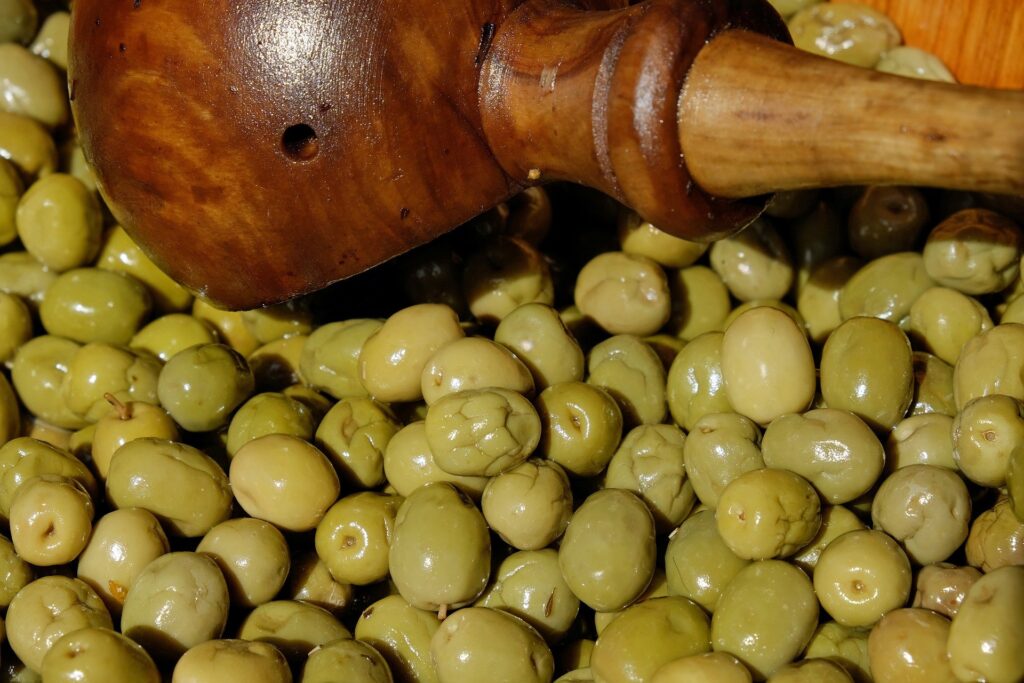

Once enough acid has been produced and the pH drops below 5, only lactic acid bacteria will be active. No other microorganisms will be able to tolerate such harsh environments.
In this way, fermentation is like a relay race. The microbes that start the fermentation usually don’t finish it. Instead the baton is passed off to other groups that can tolerate the environmental conditions.
After 2–3 weeks, the fermentation is complete and the pH of the olives has dropped between three and four.
The olives can then be pitted, stuffed, and packed into jars. Some are even pasteurized for longer shelf-lives.
Greek-style olives
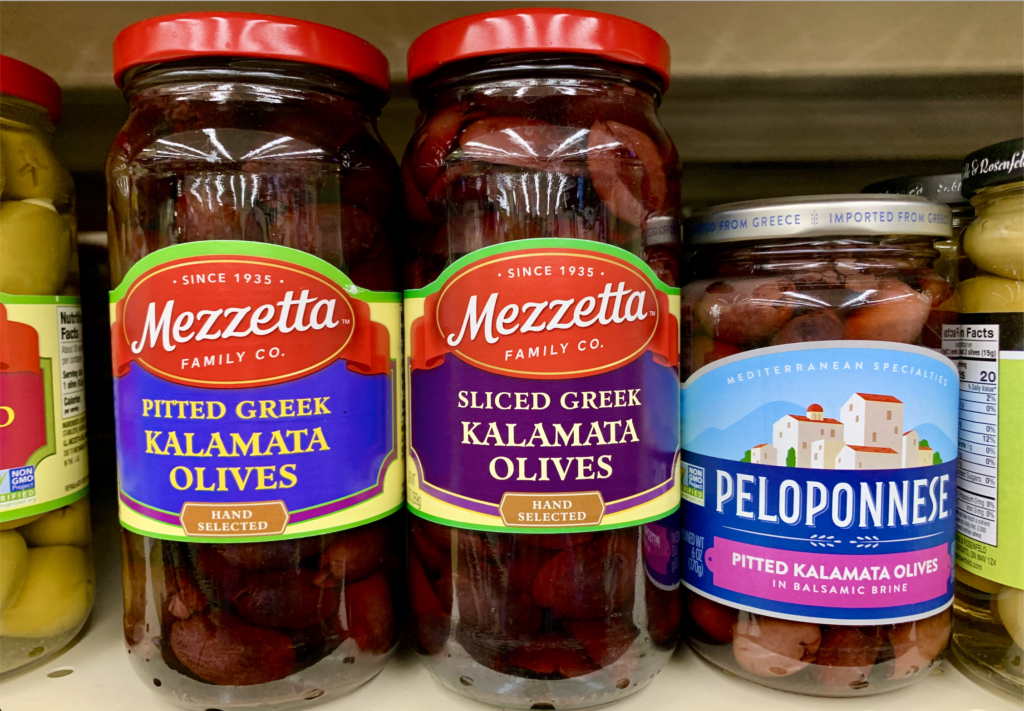

If you’ve ever seen black olives packaged in a clear, glass jar — that’s Greek-style olives.
These olives are only picked once they’re totally ripe and their skin has turned from green to purplish-black. Note that California-style olives are also black but they’re not harvested that way.
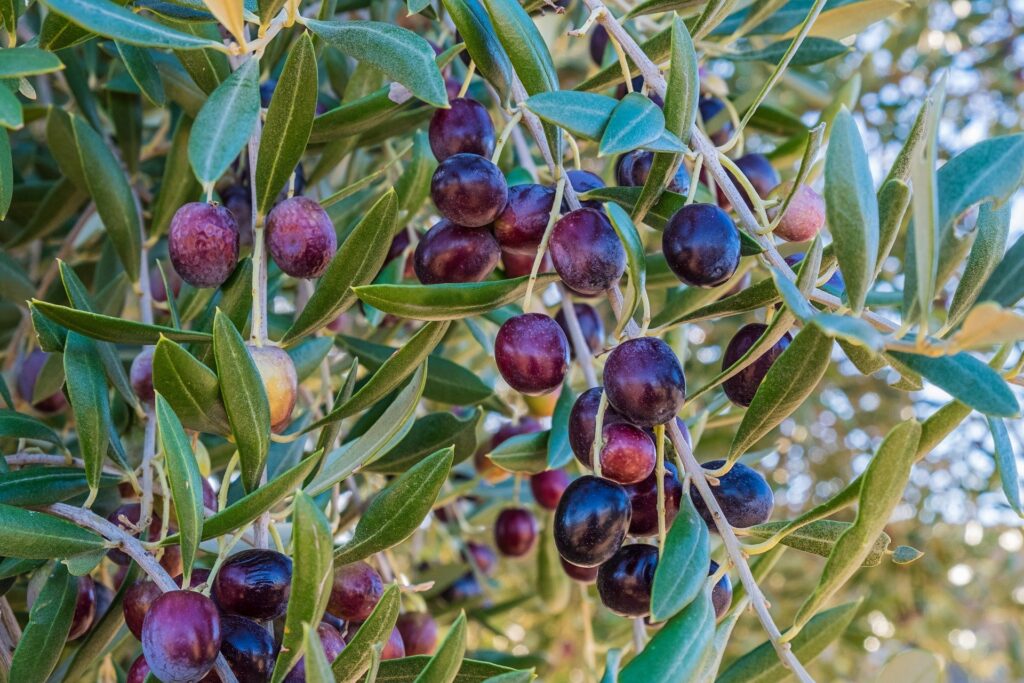

Greek-style olives skip the lye treatment that Spanish-style olives undergo meaning this type tends to have more of a bitter taste.
Instead, these olives go straight to the brining step where they’re soaked in a 6–10% salt solution.
Next, the olives undergo fermentation usually by a mixture of bacteria, yeasts, and molds naturally found on the fruit. This type of fermentation tends to be less acidic as many different products accumulate like citric acid, malic acid, carbon dioxide, and ethanol.
All that’s left to do is package the olives up.
California-style olives


While fermented olives are popular in Europe, California-style (or table olives) dominate the U.S. market.
You can find black and green table olives in the grocery store, but both types are produced from olives that are picked when they’re green.
After harvest, table olives are treated with lye similar to the process for Spanish-style olives. Again the lye helps break down the bitter compounds. Table olives usually go through multiple treatments of lye solutions.
Green table olives are then washed, canned in a salty solution, and thermally processed to destroy any harmful microorganisms.
Black table olives go through an extra aeration step to achieve their dark color.
These olives are aerated in between each lye treatment. The batch can be manually or mechanically stirred to incorporate air or some producers directly inject air into the lye bathes.
It’s really the oxygen in air that’s responsible for the color change. When oxygen reacts with certain phenolic compounds present in the olives, they are converted into molecules that have a black or brown pigment. This darkening reaction is known as oxidation and the olives are often called oxidized, black olives.
Just like green table olives, the black olives are then washed, brined, and packaged.
Even if you don’t enjoy olives, you have to admit the science behind their creation is pretty interesting.
To take a fruit that’s so bitter right off the tree that most of us would instinctively spit it out and turn them into a tiny, popular treat is quite the feat.
So, the next time you’re at a get-together be ready to liven up the conversation with all your knowledge of olive science.

